Best indoor training apps for cycling: virtual riding platforms and training apps
Whether it’s virtual racing and riding or training tracking, planning and analysis, there are plenty of options to choose from
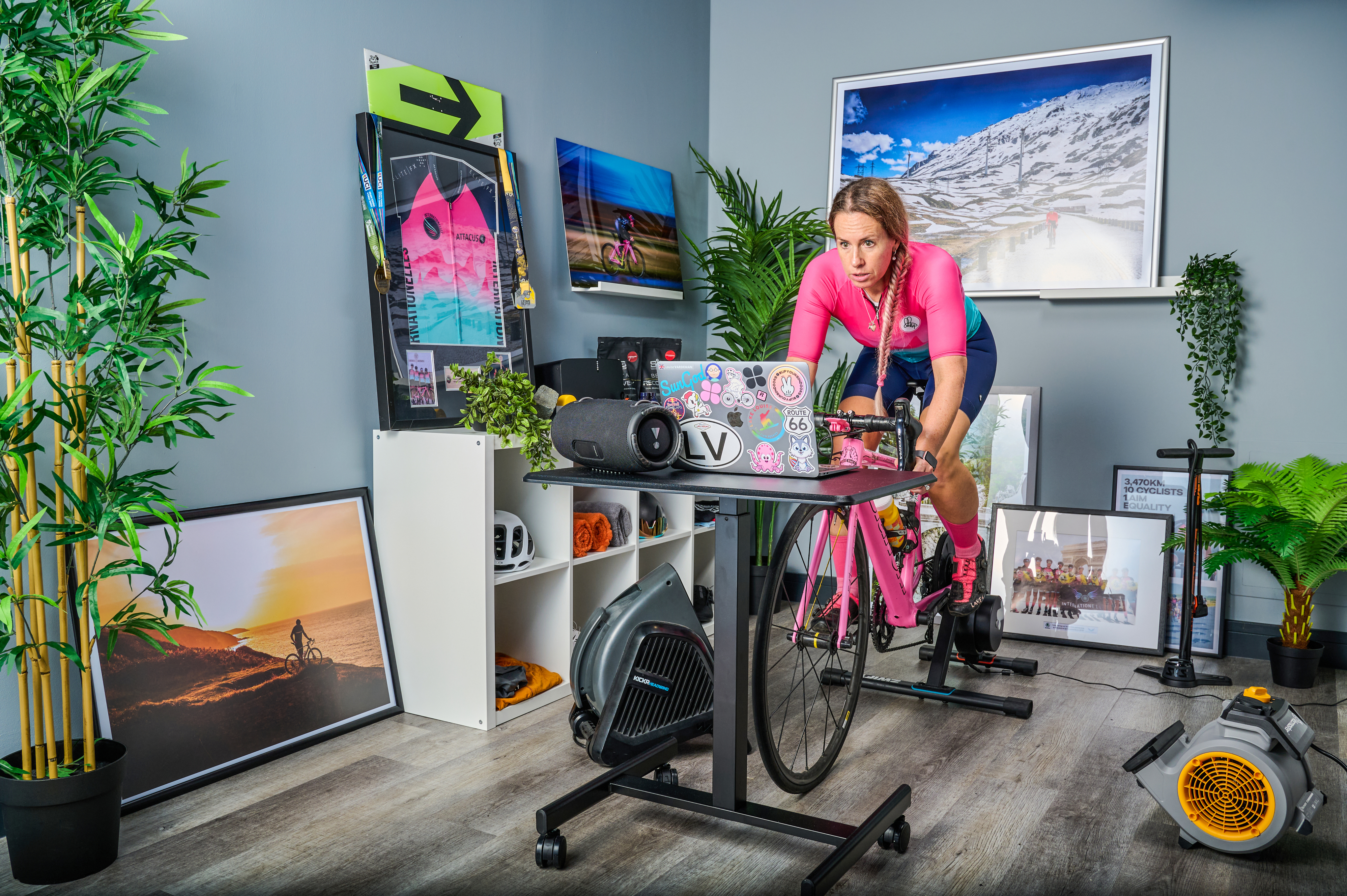


As technology has evolved, more and more training soft and hardware has hit the market, giving cyclists a huge amount of choice when it comes to training indoors, planning rides, tracking their progress, and analysing their data. But with so many options varying in appealing features, it can be challenging to decide which ones to choose.
Additionally, learning how to use a new platform can be time-consuming, and you don’t want to risk paying a subscription fee for something that may not meet your needs.
So we've logged in and ridden while plugged into all the major training apps currently available to make sense of them all. By the end of this article, you'll hopefully have greater clarity on which platforms are best suited for your riding before you commit.
We’ll start by discussing the top training apps for indoor cycling, including those with virtual worlds and more straightforward, streamlined platforms.
If you're new to riding at home, why not check out our beginner's guide to indoor cycling. It offers plenty of hints and tips to help you get started and identify the necessary kit, with one of the best budget-friendly smart trainers as a likely hardware starting point.
For seasoned indoor riders seeking an upgrade to their current kit, our guide to the best turbo trainers will point you toward the proper setup for your needs.
Best indoor training apps for cycling
Virtual riding apps
1. Zwift indoor cycling app
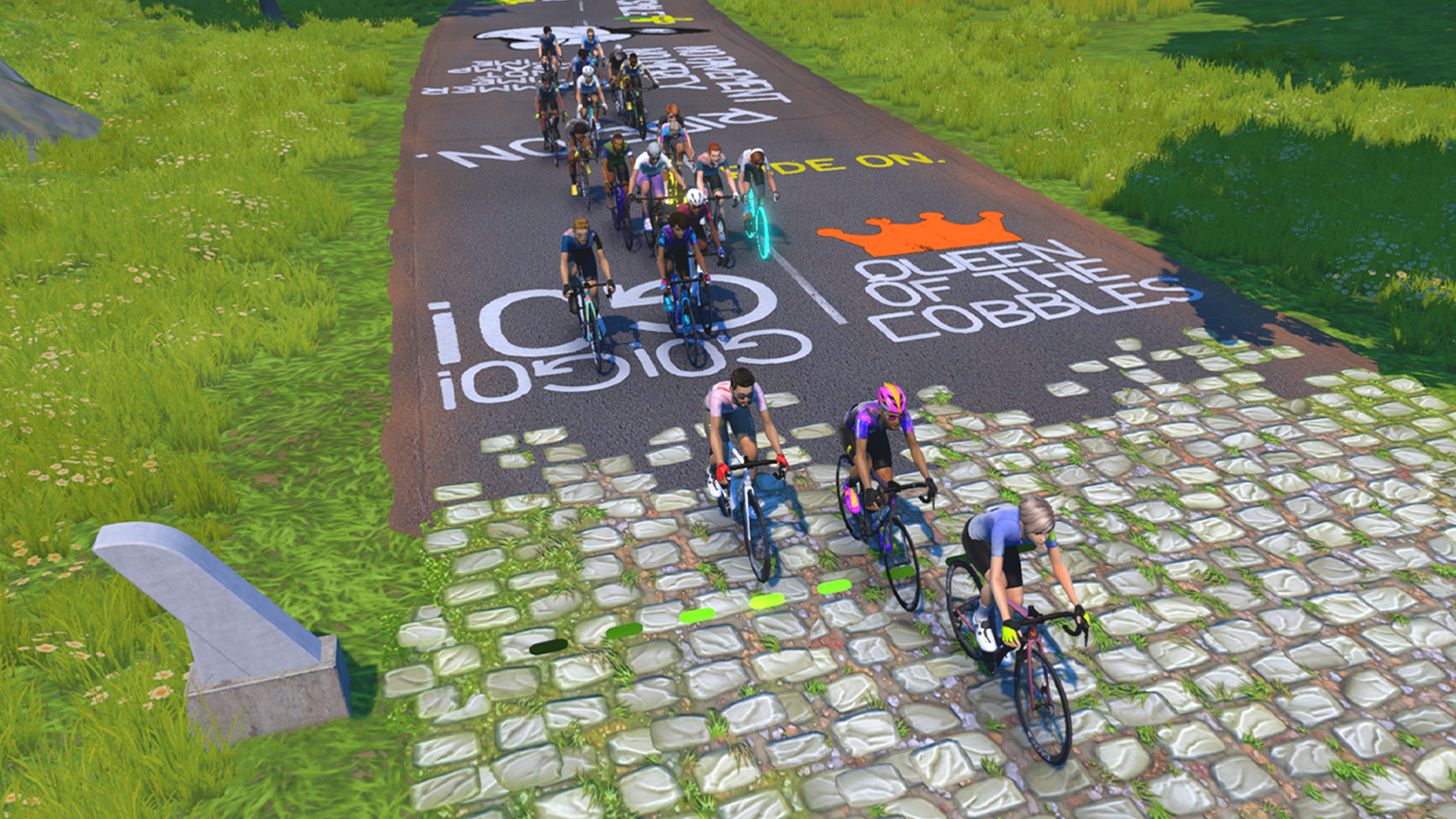
Zwift was the original virtual riding platform, and still holds the top spot
Key features: The industry leader celebrated its tenth anniversary back in 2024. During that time, Zwifters rode over 8.72 billion kilometres and collectively climbed 81.56 billion meters defining the virtual cycling discipline and creating a community. A strong sense of community participation motivates riders of all fitness and ability levels.
The latest race content, interviews, features, reviews and expert buying guides, direct to your inbox!
Over 100 volunteer organisers have supported more than 4 million community events and Zwift-organised races and group rides, such as the Tour of Watopia and the Zwift World Series, offering ample options.
Fun is Fast is the mantra that Zwift maintains, and this virtual cycling app aims to live up to that standard. Features such as an extensive garage of bikes and wheels, with customisation options for those and your avatar, allow for a level of personalisation ad expression of character.
With over 100 routes, 24-7 robopacers, and an extensive library of structured workouts and cycling training plans, there are features for every rider type.
While there are 100s of rides and races on Zwift every day, they have dropped their focus on elite racing since losing the contract to hold the UCI e-world championships. They have also put the Zwift Academy on pause for a year, but have categorically said that will be back.
Best for: Cyclists who like to be immersed in a virtual world while they ride in a social atmosphere.
Long-term user’s view: One of the best features of Zwift is the large number of other users on the platform that creates a genuine sense of community and competitiveness. You can have conversations with other riders as part of a robopacer group, or start dedicated meet-up rides with friends.
There are countless events, races, and routes to explore, and racing isn’t the only way to challenge yourself; setting a personal best on the Alpe du Zwift or Ven-Top (Ventoux) is just one of the many cycling goals you can pursue on the platform. What keeps me coming back to Zwift is its game-like nature—being competitive and having a game completionism mentality is a significant motivation for me to get on the turbo.
Verdict: Zwift has become the go-to platform for indoor training and virtual riding, with a massive user base present most hours of the day. One of the standout features of Zwift is that its events and virtual worlds allow for uninterrupted training. Completing long rides of three or four hours is entirely feasible on Zwift, thanks in part to the community and the app's game-like nature, which brings elements of outdoor riding right into your living room.
Cost: £17.99/$19.99 per month, or £179.99/$199.99 annually
2. MyWhoosh

Key features: Founded in 2019, the app boasts high quality graphics, a diverse and engaging array of courses and dozens of routes, a user-friendly interface, and efficient calendar functionality, all of which are top-notch features contributing to its growing and loyal following.
The platform hosts high-stakes cycling esports events, such as the weekly Sunday Race Club series, which features a monthly prize purse exceeding $90,000 and attracts the sport's top talent and competitive amateurs. In April 2023, the $1 Million MyWhoosh Championship series showcased the largest payout in cycling esports history.
MyWhoosh is the official indoor cycling platform for the WorldTour UAE Team Emirates and its star rider, Tadej Pogačar. The platform collaborates closely with the team's coaches and includes in-game training content developed by the UAE Team Emirates performance group. The unique relationship allows the public to experience the team's training regimen firsthand.
The innovative live coaching and video-on-demand training features provide users with an interactive and motivating training environment that fits their busy schedules. Meanwhile the workout builder is an effective tool for creating customised workouts that is on par with the likes of TrainingPeaks.
The UCI granted MyWhoosh the rights to organize the Esports World Championships for the next three years from 2023 onwards, and they are also the platform partner for the supertri E Triathlon World Championship.
Like Zwift though, it has a high level of user customisation both for your avatar, and also the bikes and wheels you can unlock and use in events. Some of these are accessible via coins, while others require gems earned from special events. MyWhoosh is also the partner of CW's Big Ride Challenge.
Best for: The platform offers all of the features plus elite and amateur-level competition without the barrier to access of a monthly subscription payment
Long-term user’s view: MyWhoosh has been growing rapidly over the last six years and now offers a choice of rides to rival Zwift. It may not have the user base that Zwift does, but it is a fast developing app that offers a few more refined elements than it's well-known competition. Personally I'm a bigger fan of the workout screen showing where you are in the workout as well as what's to come
Verdict: The graphics are solid, and the user-friendly interface and efficient calendar functionality set it apart along with the workout builder and screens. The training plans and workout offerings cater to all users, including professionals. Whether you're a racer of any ability, MyWhoosh checks all the boxes. With a steadfast commitment and substantial investment, MyWhoosh firmly establishes its place in the virtual cycling and esports landscape, with potential for plenty more to come.
Cost: Free
3. TrainingPeaks Virtual
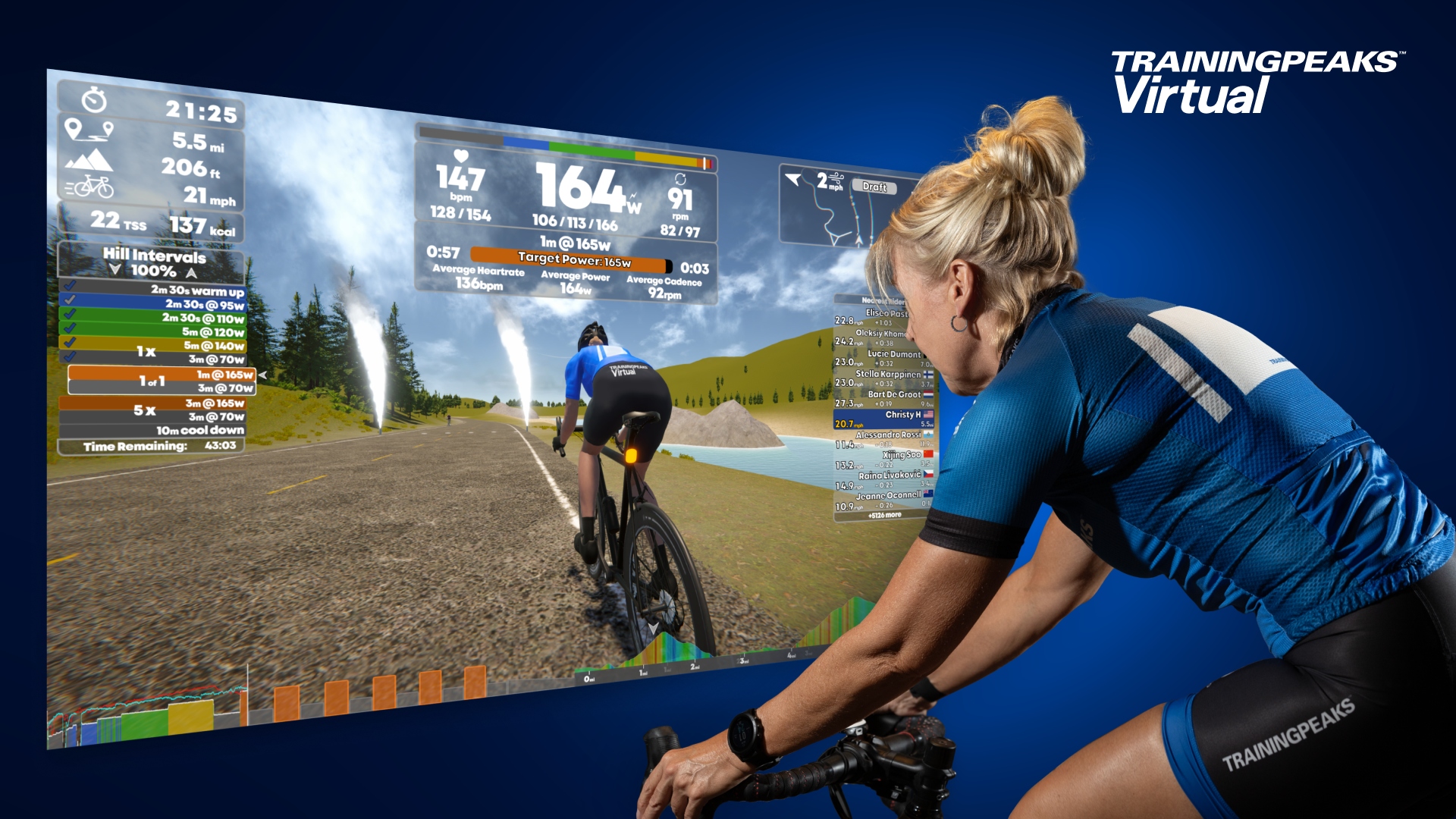
Key features: Launched in 2023 under the name indieVelo and later acquired by TrainingPeaks, this second-generation online platform is quickly making a name for itself among the discerning competitive crowd. Designed from the ground up with an esports racing focus, it aims to meet the expectations of both competitive indoor riders and fitness enthusiasts.
TrainingPeaks Virtual strives to replicate the dynamic aspects of real-life riding by incorporating elements such as wind, braking, and cornering. Its advanced draft physics enhances the authenticity of the virtual riding experience.
With built-in dual power recording, customisable event creation, and a growing community of like-minded online racers, TrainingPeaks Virtual has plenty of appeal, although once free, it's now only 'free' with a subscription to TrainingPeaks Premium.
A new element recently added is the capacity to import your own GPX files. You can either create one yourself using a rout maker, upload your own from one of your rides, or you can upload one from a ride you may have seen someone else do. Want to replicate the final stage of the Tour de France or perhaps get familiarised with an upcoming event course? You can do that on TrainingPeaks Virtual.
There is also the option to customise your training experience and how everything is presented to you. Focus mode allows for just the data, no virtual world and full focus on the session at hand. Meanwhile Zen mode places you in the virtual world but removes others, making it your own personal world to explore. Heart rate can also be used for training rather than power, which reduces the cost of entry into indoor training somewhat for users.
Best for: ompetitive indoor riders willing to sacrifice graphics for an authentic, no-cost racing and training option.
Long-term user's view: Don't expect to be astounded by TrainingPeaks Virtual's graphics or gamified elements. The simple appearance is a sacrifice the developers made to focus on ensuring the ride experience is authentic and engaging.
Standout features are the option to upload personal routes or even courses for upcoming events to get an insight into the demands of those courses.
Focus and Zen mode also offer something a bit different as plenty of people want the data only training mode rather than the VR components. Whereas some want the VR but to use it as a bit of an escape and remove the competitive element of things.
TrainingPeaks Virtual may not have the user base of larger platforms like Zwift or Rouvy just yet, but it is ever growing and expanding as it finds it's niche in the indoor training app worlds
Verdict: TrainingPeaks Virtual's race-focused development path shouldn't be intimidating. The virtual cycling platform offers all the quality-of-life enhancements that everyday users desire in a powerful, streamlined package. Although it is still in the early stages of its evolution, the high standards set so far indicate exciting developments ahead.
The user interface is simple and intuitive, while the ride feel is lifelike, immersive, and engaging. TrainingPeaks Virtual is an excellent choice for any rider looking for an effective indoor cycling option, and for racers, be that indoor or outdoor, it’s a no-brainer. The future looks bright for TrainingPeaks Virtual users, who will have the opportunity to shape the direction of cycling esports.
Cost: Free with TrainingPeaks Premium subscription, which is $19.95 per month or $134.99 annually. All prices are in USD so users outside of the US will be subject to exchange rates.
4. Rouvy
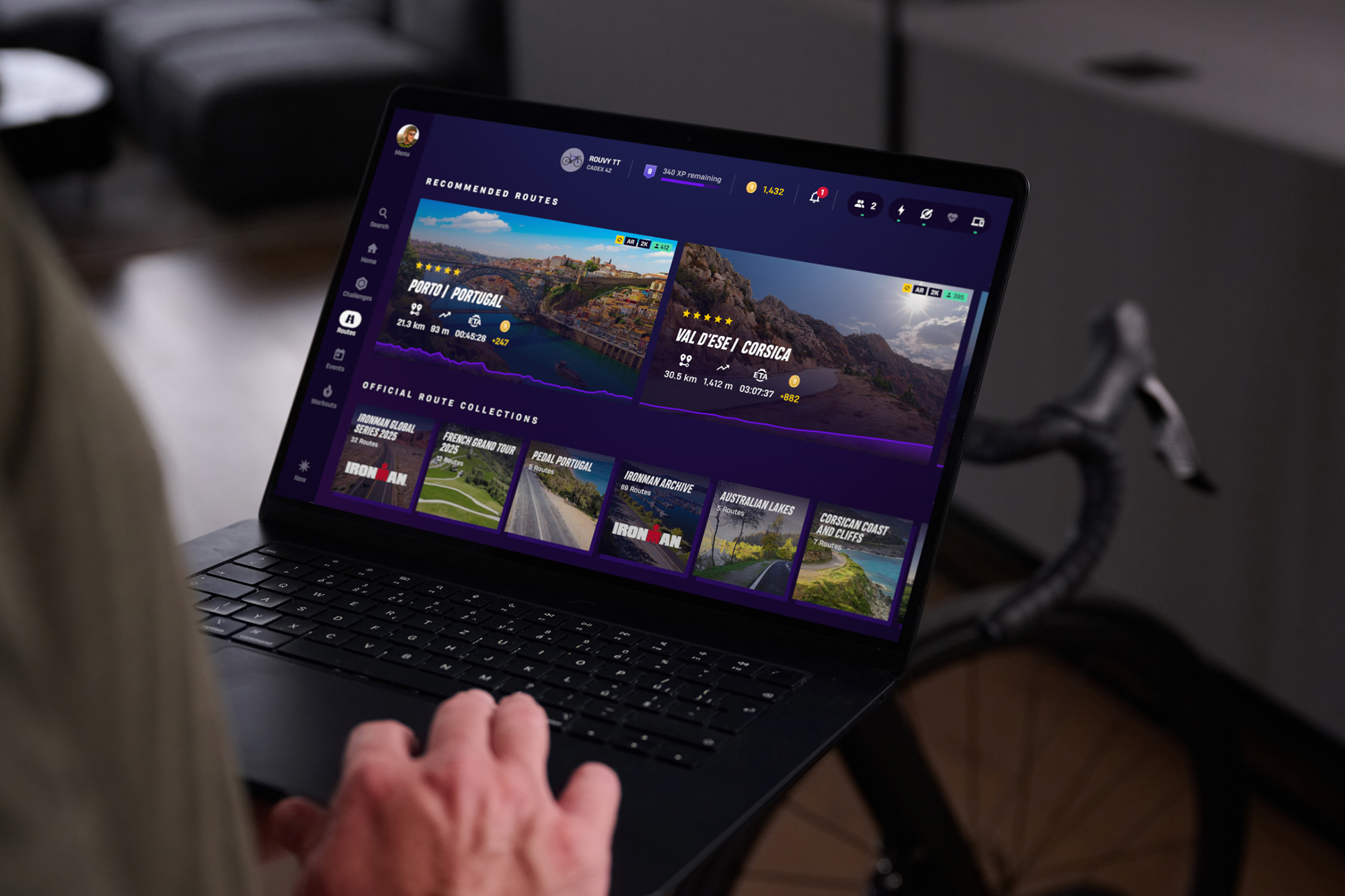
Key features: Since 2017, Rouvy has allowed users to ride, race, and train on scenic terrain from around the globe, embodying its mission to "Bring the Outdoors Home." With an extensive collection of thousands augmented reality (AR) routes, Rouvy features real-world videos showcasing famous landscapes, iconic climbs, and actual race courses, making riders feel like they're really climbing L'Alpe d'Huez, not the simulated Alpe du Zwift.
Since 2021, Rouvy has partnered with La Vuelta a España, offering a variety of races and events daily. The platform hosts more than 320 official races and group rides each month and over 2,000 additional events created by users and the community. Each week, Rouvy introduces a new Spotlight.
Spotlight is a curated collection centred around a specific theme. It features new routes, challenges, events, and additional content to tell a unique story. Through Spotlight, users can easily explore some of Rouvy's best new offerings, keeping them engaged and active throughout the year.
For example, as a partner of both the Lidl-Trek and Team Visma Lease a Bike WorldTour teams, users can enjoy related features such as Winter Training Camp Spotlight with routes from familiar European training camp hotspots such as Andorra and Girona.
Alternatively, users can undertake a five-week Alpine Peak climbing Spotlight starring ROUVY ambassador and former British men's hill climb champion Andrew Feather. This plan takes in five legendary Dolomite passes each recorded by ROUVY’s community using the ROUVY Route Creator, including Passo Pordoi, Passo Sella, Passo di Giau, Passo Fedaia and Passo Gardena.
For upcoming events, in 2026 users will be able to experience the 2025 World Road Race Championships course from Rwanda, ride the Czech Tour 2025 route, Life Time Gravel events, and take on new and exciting routes as part of the Great World Adventure Series.
The aforementioned Route Creator allows users to create and personalise their own routes, uploading it from a GPS-enabled camera to the Route Creator tool. From here its converted into a virtual route to be shared with the Rouvy community. Additionally, Rouvy has recently updated its search functionality via a new interactive map, designed to offer easier exploration of routes around the world, in places such as Bolivia, Sri Lanka and Tajikistan.
From October 20th 2025, timed segments have been introduced. Users can now find a selection of pre-defined segments across climbs, road sections and shorter sprints. Avatars show the segment leader, your friends' and your own past best efforts. These also link to Strava, so you can complete them as Strava Live segments as long as you have an active Strava subscription. Want to see how you compare to the KOM/QOM time or to your personal best in live time? Now you can
Rouvy recently acquired the BKool app, which will merge the user bases together.
Best for: Riders who enjoy the feeling of being immersed in the realism of stunning scenery.
Long-term user’s view: Riding in a real environment and exploring cycling's storied and picturesque vistas from the comfort of your home is great fun. This isn't a virtual recreation either, this is film from those real locations with your virtual avatar laid over into the world. The addition of the Route Creator will only enhance this feature as users add more of their favourite routes from around the world.
There are also plenty of great workouts tried and tested by World Tour teams, so this is a helpful platform to boost and structure your training while making the process feel that bit more immersive.
The option to explore new routes and climbs is a real game-changer and something that very feel others on the market offer, certainly not to this degree, making Rouvy a unique player in the indoor training market now.
Verdict: Rouvy is a solid indoor cycling app option, particularly for riders who prefer to train on "real" roads. While it has a smaller community than other platforms, its user base is steadily growing, and we can expect Rouvy to continue to evolve and become a popular training environment. The acquisition of BKool is another step into that evolution.
Cost: ROUVY offers various subscription options, including single, duo, and group plans, which are available on both a monthly and yearly basis. The price for a single user is $19.99 / £17.99 per month or £159.96 per year.
Virtual training apps
1. TrainerRoad
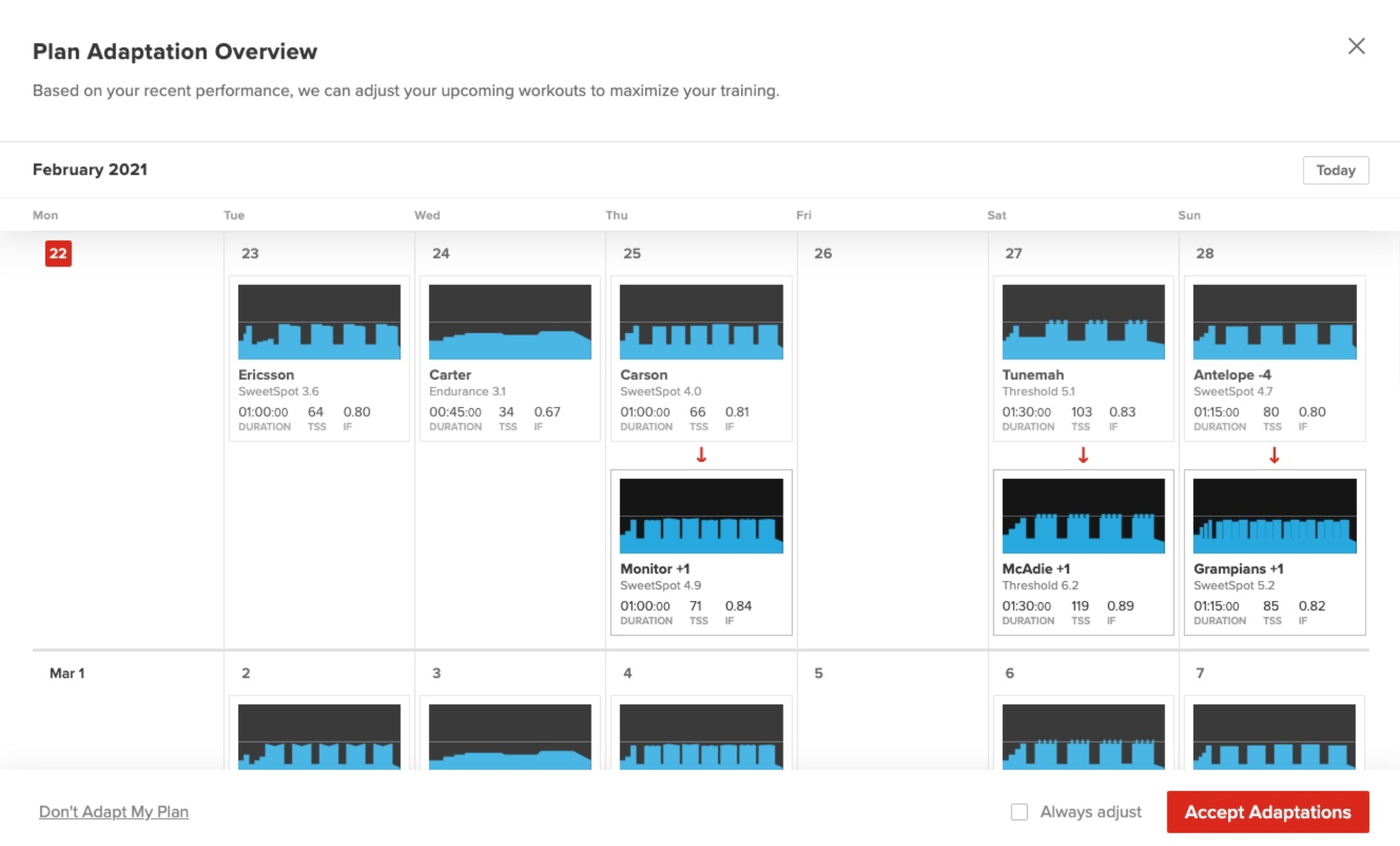
Key features: TrainerRoad caters to a specific group of indoor cyclists who prefer a more analytical and structured training approach. A standout feature of the app is its automated Training Plan Builder. Upon signing up, the app prompts users to input key information, such as their target races for the season and available training time. Based on this information, the app generates a customised training program tailored to users' needs.
TrainerRoad employs a data-driven method that analyses a vast amount of athlete data to track changes in Functional Threshold Power (FTP) without requiring exhaustive tests. It offers plans for various types of rides, including road cycling, gravel riding, gran fondos, triathlons, mountain biking, and cyclocross, while also addressing general fitness goals alongside race-specific objectives.
With a database of over 250 million logged activities from athletes in more than 150 countries, TrainerRoad stands out with its collection of over 25 million specific workouts. This "planned vs. actual" data informs the platform's AI and machine learning models, providing unique insights that give TrainerRoad a competitive edge in AI-driven cycling coaching.
Best for: Riders looking to add structure to their training sessions without paying a coach.
Long-term user’s view: The cycling training plans can be rather intense, with a higher proportion of hard interval sessions than other apps, which turns some users off. The ability to include outdoor rides and the app’s machine-learning-powered adaptive training plan algorithm go some way to reducing this overreaching issue. However, the app lacks the personal attention and ability to adapt to changes in mood, stress, or daily life that can affect an athlete's overall wellness, something only a human coach can provide.
Verdict: Ask yourself: Are you the focused type of rider who thrives on structure and prefers having someone else handle the details without the complexity or cost of a coach? If so, TrainerRoad is likely an excellent fit for you. It certainly offers a cheaper entry point into the world of coaching that may lack some personalisation and nuance, but is great value and perfect for beginners.
On the other hand, if you’re motivated by the social aspect of cycling, enjoy measuring your fitness against others, and appreciate the distraction of gamification, then a virtual cycling platform such as Zwift or MyWhoosh is where you'll find the most satisfaction.
Cost: $21.99 per month or $209.99 yearly. All prices are in USD so users outside of the US are subject to exchange rates.
2. Wahoo X - Wahoo Systm
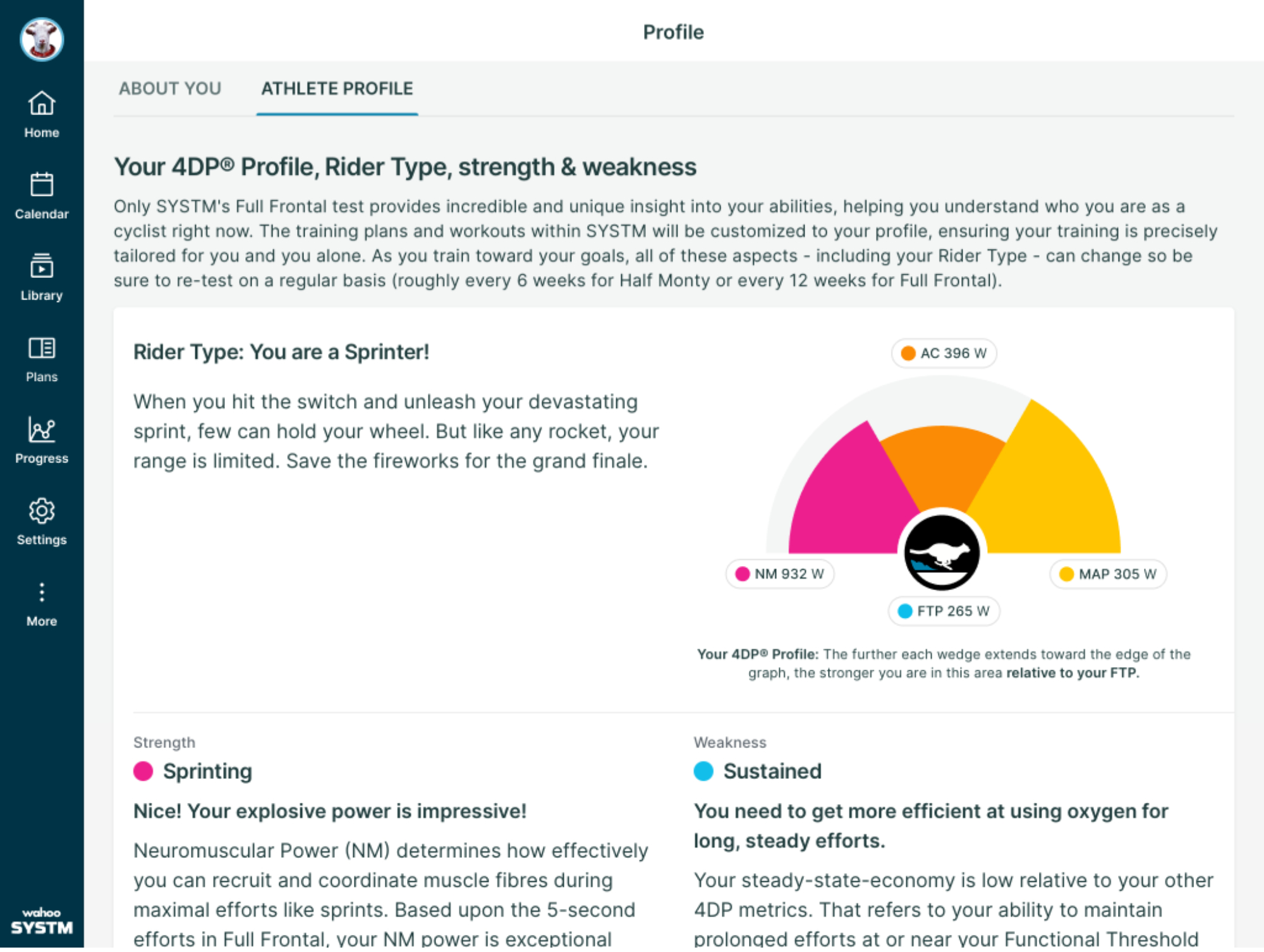
Key features: Systm implements more than just cycling workouts, and instead offers a broader focus on immersive indoor workouts alongside off-bike work such as strength sessions, yoga, and mental training to try and tackle a broader range of the performance spectrum.
Workout sessions are split based on your 4DP, a new means of determining power beyond just FTP. This takes peak performances across sprints, short duration 1 minute efforts, VO2/MAP efforts, and more sustained FTP efforts to give a broader power profile. It is more similar to Critical Power but even broader. Sessions are then grouped based on the 4DP focus with the power targets individualised based on your specific results rather than a percentage of FTP.
The workouts themselves vary on how they are structures. Some Inspiration rides use stories to keep you engaged during activities, while other rides offer the chance to virtually ride with Wahooligan ambassadors. The main workouts themselves are derived in part from the old Sufferfest training videos. They feature race footage at times that tie in with the efforts, so you can envisage yourself attacking the peloton on the cobbles of Flanders.
Best for: Riders looking to improve their fitness beyond increasing their FTP as well as having access to more than just cycling workouts.
Long-term user’s view: The 4DP test is the foundation of Wahoo SYSTM. Originating from the former Sufferfest app, this test has riders complete maximal sprints and a one-minute, five-minute, and 20-minute effort. From this test, riders get a performance profile and utilise it to tailor training sessions.
Wahoo SYSTM also integrates outdoor training into its platform. Support for multiple sports is now available, too, as well as off-bike workouts to support your cycling.
There isn't a community feel as such, relying on forum chats like TrainerRoad for this element. However the race footage video that builds the workouts to match the race scenarios is very engaging and great motivation for those really high capacity efforts. Chasing down the break or attacking to the finish line adds that little extra incentive to really push hard in efforts.
Verdict: Moving beyond FTP and training based on a more comprehensive performance profile is excellent for the racing cyclist, but the platform can feel slightly less developed than its competitors. That said, the off-bike workout and mental training features are unique and their benefits may come in handy when the going gets tough in a race.
Cost: $17.99 / £14.99 per month or $179.99 / £149.90 annually.
Training and analysis apps
1. Training Peaks

Key features: A vast library of plans and workouts to choose from | Accompanying educational content to guide training
Best for: Coached athletes | Athletes who enjoy setting their training and analyzing their centralized historical training and racing database
Long-term user’s view: I have used TrainingPeaks since I started cycling in 2017. It hasn’t changed much in that time, with minimal new features added. TrainingPeaks is essentially a glorified spreadsheet. The app has a reasonable amount of analysis, and many graphs are available, but its beauty is in its simplicity. The app is easy to understand, integrates well with almost all devices, and allows you to view the most relevant information. Many coaches use Training Peaks to manage their coached athletes.
Verdict: Training Peaks was initially founded on the concepts of TSS (training stress score) and CTL (chronic training load), but it has evolved well beyond these two metrics. While the ATP (annual training plan) feature and TrainingPeaks's metrics offer valuable insights, they have limitations since human physiology is often more complex. The app encourages more training, but increased volume doesn’t always yield better results.
That said, it serves as a solid starting point for managing your training load. There’s a reason Training Peaks is the market leader: it offers user-friendly data analysis features and an excellent training session-building tool that allows users to create sessions based on various metrics tailored to their preferences.
Cost: $19.95 / ~£16.50 per month, or $134.99 a year for the Premium subscription.
What is the best indoor cycling app?
Choosing an app isn’t a zero-sum game in the ever-evolving world of virtual cycling and esports. There are several options, each with its unique and standout qualities. While indoor riding and turbo training may not be for everyone, the convenience, comfort, cost, competition, and sense of community make them a far more appealing prospect than they were a decade ago.
Modern indoor cycling offers an excellent way for time-crunched athletes to train. It keeps you warm and dry, and tailoring sessions to meet your specific goals is much easier. Completing intervals and tracking progress becomes more accurate, and you won’t have to worry about traffic, road surfaces, or other external factors that could disrupt your ride.
Ultimately, the perfect indoor training app for your needs will come down to personal preference. However, to get the most out of your rides over the long term, finding an app that keeps you motivated is essential. Fortunately, it’s easy to switch platforms if you want to try something different, and you’ll typically have a free trial period before committing to a monthly payment.
Frequently asked questions
Alternatives to using indoor cycling apps at home
Cycling indoors might not be the most enjoyable for some people, but during the winter, it can be the optimal way to complete rides without needing all of the winter kit and a winter bike to match.
Another option is to use a turbo at home to follow a routine without bothering with an app, though it might not be the most interesting. Some indoor cycling converts would rather watch paint dry than drone away in that sensory deprivation when so many virtual cycling options are available.
Group cycling classes are another option—either at home with a Peloton indoor exercise bike or a more social gym class.
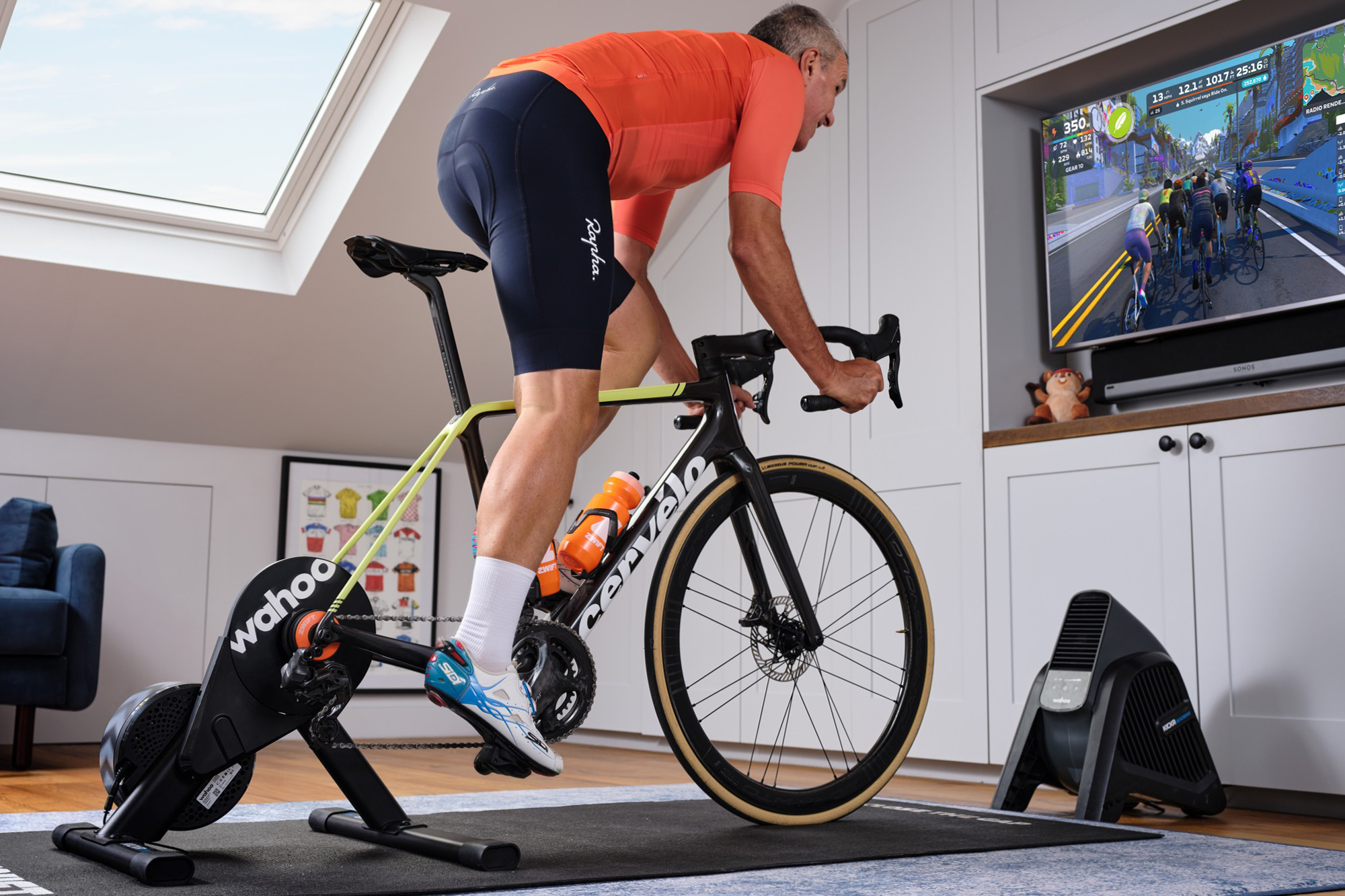
Smart fans, big screens, they add to the experience but aren't necessary for everyone
What equipment do I need?
Indoor cycling in it's purest form needs very little. The price of power meters and indoor trainers has dropped significantly over the last few years, with entry price models coming at £279.99 for the Van Rysel D100 or £499.99 for the Wahoo KICKR Core 2. Of course, there are far more premium options, with the Tacx Neo 3M costing £1599.99 and smart bikes being anywhere from £1795.99 up to nearly £5000.
Beyond the smart trainer, you can use your bike frame that you would use outside, while some accessories such as a mat for under your bike and a towel for mopping up sweat are key essentials. A fan is a useful investment, and while smart fans are an option, desk fans or standing ones will do the job well.
As for using indoor training apps, you can use just your phone screen for most of these. If you want a more immersive experience then a larger screened tablet or desktop will enhance the experience. While the biggest screens can be used in conjunction with the likes of AppleTV units and a connected flat screen to bring the virtual world right into your training room.
But as for what's needed, a direct drive trainer, your bike, phone, and ideally a mat, towel, and fan, should be enough to make your indoor training experience effective and enjoyable.
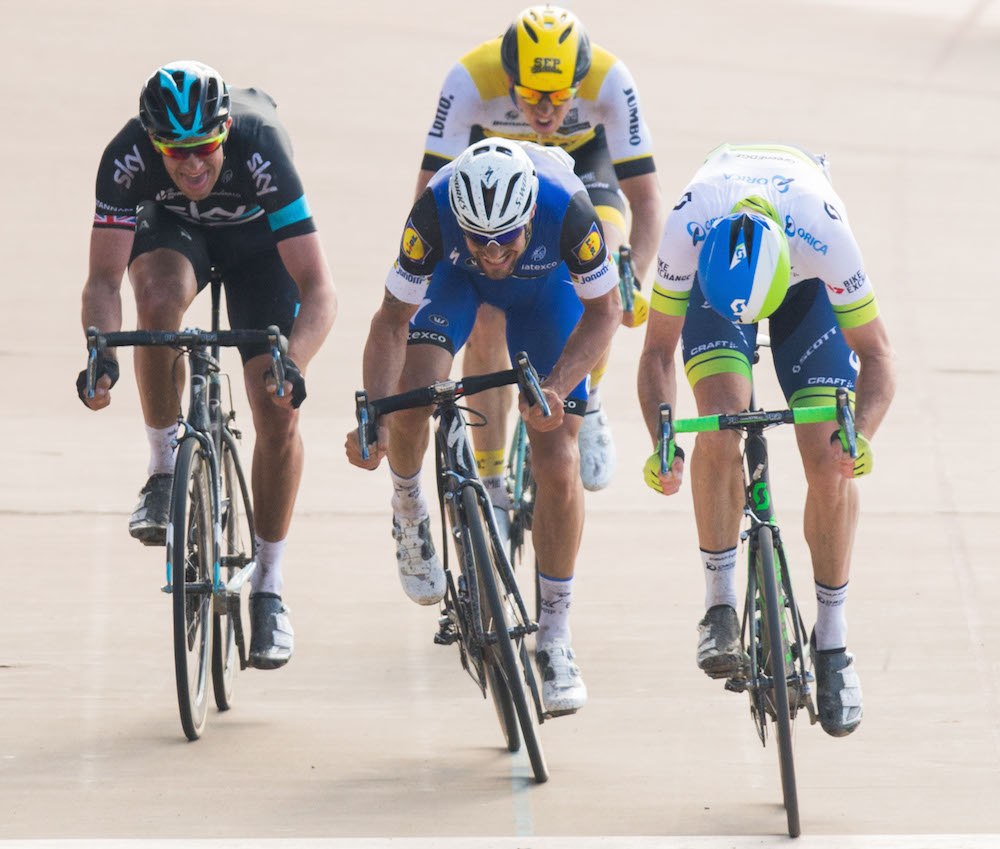
Matt Hayman wins Paris Roubaix
Will indoor training help my outdoor riding?
It was well documented by Matthew Hayman that before we went on to win Paris-Roubaix in 2016, he had to spend extended periods of time training indoors due to breaking his arm. This meant not riding out on the roads, and to maintain World Tour fitness he needed to get the hours in on the turbo.
We've also experimented with this at Cycling Weekly, although with not quite as high stakes, and the results were similar in that indoor training improved performance outdoors.
There are several key elements to indoor riding that is applicable when riding outside. Firstly, you never stop pedalling indoors, and descents are not a place where you ease off the power. Stop-start riding in cities is also no longer a problem, and you don't have to wait to find a safe stretch of road to conduct efforts. Combined this makes it far easier to control training indoors and ensure that you are getting in quality training sessions that are targeted and specific to your goals. Essentially, you can be far more time efficient.
Another element is one that is far more looked into nowadays, and that is heat training. Riding indoors often results in an increased temperatures as we produce a lot of work with often far more limited airflow. This can create a more humid environment and act as a means of heat adaptations training.
Not just useful for hot events, heat training can have somewhat of an altitude-lite effect whereby blood plasma and total blood volume increases to improve aerobic performance. The saying train hot race cool applies here, and indoor training can add this added stimulus for aerobic improvements. But be wary that too much heat stress in addition to training stress can accelerate the instances of burnout.
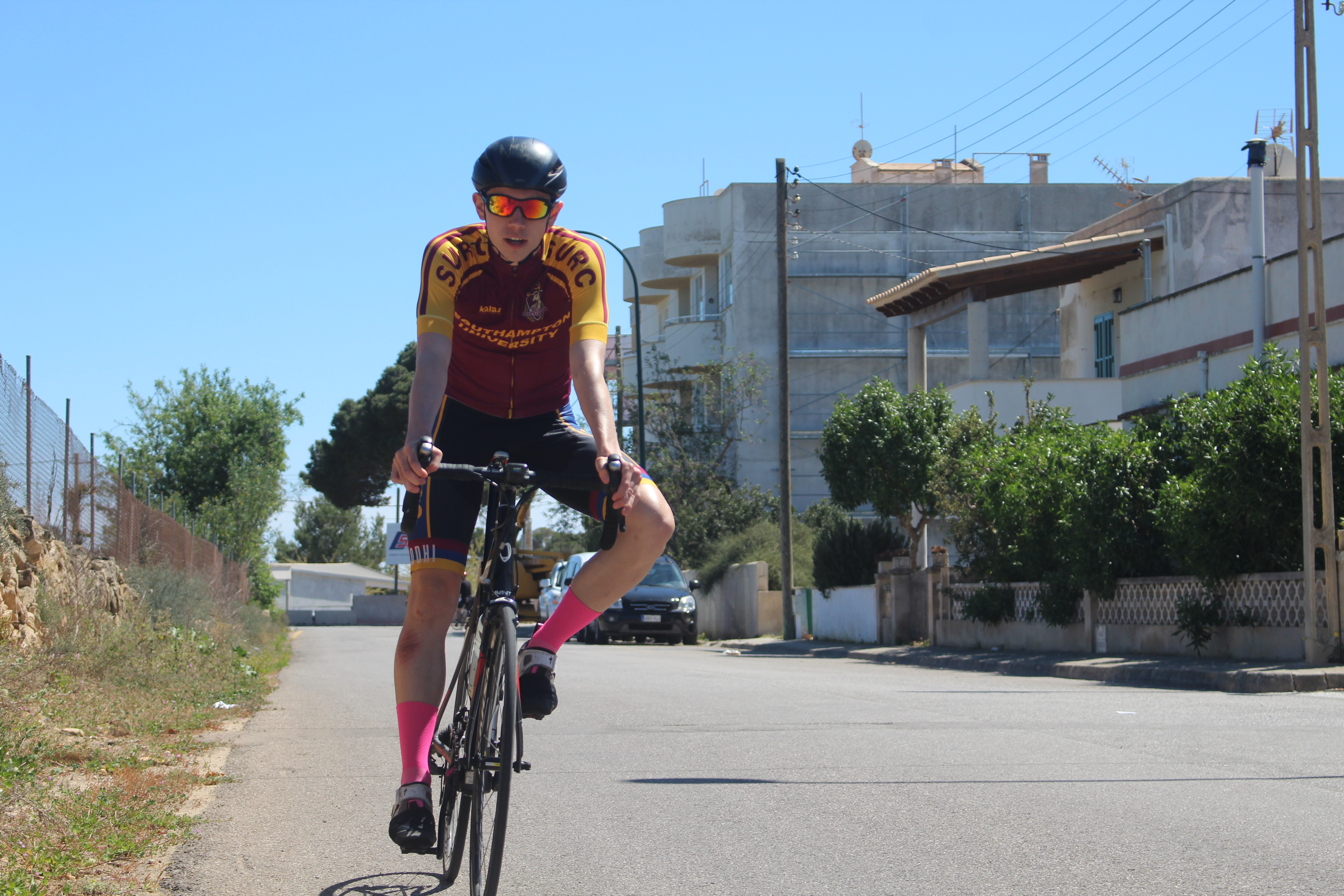
Tom Epton is a freelance writer and data scientist. Originally training as a scientist after completing his studies in physics he realised that cycling was what he wanted to spend his life thinking about. Now he works with manufacturers, athletes and teams using cutting edge data science methods to find performance gains. Tom writes primarily about sport-science and tech!
You must confirm your public display name before commenting
Please logout and then login again, you will then be prompted to enter your display name.